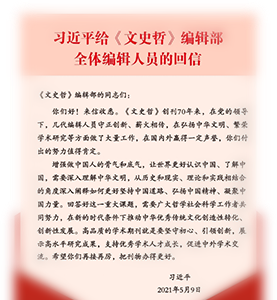论“赋心”、“赋迹”理论的复奏与变奏
王思豪
摘要:中国赋论史上的“赋心”、“赋迹”理论不大可能由司马相如提出。此理论的本义不关理义,仅作为一种文学的审美批评存在,但在后人的阐释中,却逐渐将其中的“一经一纬”与《诗经》学的“三经三纬”说相比附,将“一宫一商”与《风》、《雅》遗音相对接,从而以“诗迹”量“赋迹”,认为“赋心”即“经术之心”,“诗为赋心”。赋以风雅为宗,据此引入诗教观点来审视赋体发展,将《诗经》学的“正变”学说置于赋体衍变程序中,赋体、赋风因此有了“正”、“变”之区分。“赋心”、“赋迹”理论的变奏,体现的是赋体之教化批评与审美批评的融汇。
On the Double and Variation of the Theory of “Writing Fu for Implication” and “Writing Fu for Literary Grace”
Wang Sihao
Abstract: The theory of “writing fu for implication” and “writing fu for literary grace” in history is unlikely to be proposed by Sima Xiangru. The original meaning of the theory was not about the Confucian classics, and it just existed as a kind of aesthetic criticism. Yet in posterity’s interpretation, the “one longitude and one latitude” in it was gradually compared with the theory of “three longitudes and three latitudes” in the studies of The Book of Songs, and the “one gong and one shang” in it was connected with the handed-down music of feng and ya. Therefore, “writing fu for literary grace” was measured by the aspiration of poetry, and “writing fu for implication” was aimed at the studies of Confucian classics. Once the development of fu was examined by the Confucian teaching by poetry, as well as the theory of “standard form” and “variant” in the studies of The Book of Songs was put in the course of fu, the style of fu had the distinction of standard and variant. The variation of the theory of “writing fu for implication” and “writing fu for literary grace” reflected the fusion of civilizing criticism and aesthetic criticism on the style of fu.


